一、活动简介
“CSIG图像图形中国行”是由中国图象图形学学会主办的学术活动,旨在推动图像图形学科的普及,加强各高校研究所以及企业间的交流。自2017年4月起,分别在扬州大学、哈尔滨工业大学、兰州大学、杭州电子科技大学、北京交通大学、海南大学、福州大学、西北农林科技大学、佛山科技学院等及深圳、烟台成功举办了80余期,线上线下参会人数累计数万人次,受到业界好评。本次“CSIG图像图形中国行”由CSIG机器视觉专委会与西北工业大学联合承办,交流主题为“面向非常规相机的视觉感知”。


主办:中国图象图形学学会(CSIG)
承办:CSIG机器视觉专委会
西北工业大学
协办:陕西省信息获取与处理重点实验室
时间:2022年8月26日14:00
地点:在线腾讯会议 会议号:757 499 827
二、执行主席
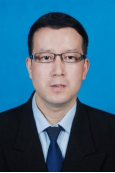
戴玉超 教授
西北工业大学环球360注册登录,教授/博导,国家级青年人才,陕西省信息获取与处理重点实验室主任。主持国家自然科学基金、科技创新2030“新一代人工智能”重大研究计划子课题、JKW领域基金重点项目等科研项目。聚焦复杂动态场景三维重建与感知、数据与模型混合的三维视觉、仿生视觉传感器、显著性/伪装目标检测等方面,在TPAMI、IJCV、ICCV、CVPR、NeurIPS、ECCV等国际顶级期刊和会议上发表论文70余篇,谷歌学术引用超6100次,H指数37。获CVPR 2012最佳论文奖、CVPR 2020最佳论文奖提名、火箭军人工智能挑战赛全国冠军、ECCV 2020鲁棒视觉挑战赛冠亚军等奖项。担任CVPR、ICCV等国际顶级会议领域主席,ACCV 2022宣传主席,中国图象图形学报青年编委,APSIPA杰出讲者。
三、特邀专家

陈渤 教授
个人简介:陈渤,教授、博士生导师。分别于2003、2006和2008年获西安电子科技大学学士、硕士和博士学位。2008年至2013年在美国杜克大学电子计算机工程系做研究员(research scientist)。2013年加入西安电子科技大学,国家级青年人才,新世纪优秀人才支持计划,获得陕西省自然科学一等奖(1/6)、全国百篇优秀博士学位论文提名奖和陕西省青年科技标兵奖等。现任西电信息感知集成攻关研究院副院长、中国电子学会雷达与信号处理系统专委会副主任委员和“111引智基地”执行主任,担任IEEE Transactions on Signal Processing、Engineering、雷达学报等期刊的(青年)编委。以第一或通讯作者在顶级期刊和会议发表论文100余篇,包括NeurIPS、ICML、ICLR和TPAMI、IJCV、TSP等。主要研究方向为机器学习、雷达目标检测与识别。
报告题目:视频单曝光压缩成像中的动态特性
——Explore the Time Issues in Snapshot Compressive Imaging
报告摘要:单曝光视频压缩成像作为新兴的计算成像技术,通过在成像期间引入编码压缩,将多帧视频压缩为单帧测量,实现以二维传感器获取三维数据的能力。然而,从压缩测量中恢复原始场景的动态特性具有巨大挑战。本报告从时序建模的角度,捕获了在单目、双目单曝光压缩成像系统中的视频动态特征,实现了快速高质量的视频重建。此外,进一步探究了在大场景下重建算法所面临的实用性挑战,并从不同角度(可逆网络、元学习)提出相应解决思路。
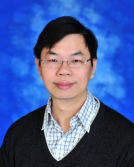
林嘉文 教授
个人简介:Prof. Chia-Wen Lin is currently a Professor with the Department of Electrical Engineering, National Tsing Hua University (NTHU). He also serves as Deputy Director of the AI Research Center of NTHU. His research interests include image/video processing, computer vision, and video networking. Dr. Lin is an IEEE Fellow, and has served on IEEE Circuits and Systems Society (CASS) Fellow Evaluating Committee since 2021. He is also serving as IEEE CASS BoG Member-at-Large during 2022-2024. He was Steering Committee Chair of IEEE ICME (2020-2021), IEEE CASS Distinguished Lecturer (2018-2019), and President of the Chinese Image Processing and Pattern Recognition (IPPR) Association, Taiwan (2019-2020). He has served as Associate Editor of IEEE Transactions on Image Processing, IEEE Transactions on Multimedia, IEEE Transactions on Circuits and Systems for Video Technology, and IEEE Multimedia. He also served as a Steering Committee member of the IEEE Transactions on Multimedia. He was Chair of the Multimedia Systems and Applications Technical Committee of the IEEE CASS. He served as TPC Chair of IEEE ICME in 2010 and IEEE ICIP in 2019, and the Conference Chair of IEEE VCIP in 2018. His papers won the Best Paper Award of IEEE VCIP 2015, and the Young Investigator Award of VCIP 2005.
报告题目:Making the Invisible Visible: Toward High-Quality Deep THz Computational Imaging
报告摘要:Terahertz (THz) computational imaging has recently attracted significant attention thanks to its non-invasive, non-destructive, non-ionizing, material-classification, and ultra-fast nature for 3D object exploration and inspection. However, its strong water absorption nature and low noise tolerance lead to undesired blurs and distortions of reconstructed THz images. The performances of existing methods are highly constrained by the diffraction-limited THz signals. In this talk, we will introduce the characteristics of THz imaging and its applications. We will also show how to break the limitations of THz imaging with the aid of complementary information between the THz amplitude and phase images sampled at prominent frequencies (i.e., the water absorption profile of THz signal) for THz image restoration. To this end, we propose a novel physics-guided deep neural network model, namely Subspace-Attention-guided Restoration Network (SARNet), that fuses such multi-spectral features of THz images for effective restoration. Furthermore, we experimentally construct an ultra-fast THz time-domain spectroscopy system covering a broad frequency range from 0.1 THz to 4 THz for building up temporal/spectral/spatial/phase/material THz database of hidden 3D objects.
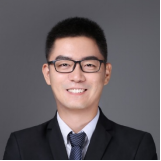
施柏鑫 研究员
个人简介: 施柏鑫,分别于2007年、2010年、2013年从北京邮电大学、北京大学、日本东京大学获得工学学士、工学硕士、博士学位。2013至2017年曾先后在麻省理工学院媒体实验室、新加坡科技设计大学、新加坡南洋理工大学、日本国立产业技术综合研究所从事研究工作。现任北京大学计算机学院数字媒体研究所研究员、博士生导师(“博雅青年学者”);北京大学人工智能研究院院长助理;北京智源人工智能研究院青年科学家。从事计算摄像学与计算机视觉研究,发表论文140余篇(包括TPAMI论文14篇,计算机视觉三大顶级会议论文53篇)。2015年获得国际计算摄像会议(ICCP)最佳论文提名、国际计算机视觉会议(ICCV)最佳论文候选,2021年获得日本大川研究助成奖。主持科技创新2030—“新一代人工智能”重大项目、国家自然科学基金重点、国家级青年人才等多个项目。担任国际计算机视觉(IJCV)等期刊编委,CVPR、ICCV等国际会议领域主席。IEEE高级会员。更多信息请访问“相机智能”实验室主页:http://ci.idm.pku.edu.cn
报告题目: 神经形态事件与传统图像的互补增强机制
报告摘要: 脉冲相机、事件相机等神经形态相机,对比逐帧成像的普通相机,拥有独特的优势,尤其是其对于高速运动物体和高动态范围场景的感知能力。本报告以事件相机为例,介绍神经形态与传统相机融合并互补增强成像质量的计算摄像方法与系统,具体从两个方面展开:一方面,介绍传统图像如何增强事件信号的质量,对其进行去噪、超分辨率操作并建立其与传统图像的关键点数据匹配;另一方面,介绍事件信号如何引导传统图像的超分辨率、去模糊以及应用于卷帘快门果冻效应的消除。
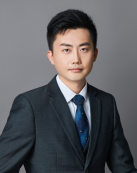
周易 教授
个人简介:报告人简介:周易,工学博士,湖南大学机器人学院教授、博士生导师,NAIL(Neuromorphic Automation and Intelligence Lab)实验室负责人。主要研究兴趣包括视觉里程计(VO/SLAM)、动态视觉传感器、计算机视觉中的几何问题、空中机器人GNC。2018年于澳大利亚国立大学工程与计算机科学学院获得博士学位。期间在瑞士苏黎世联邦理工学院访学,获得瑞士国家科学基金委授予的NCCR Fellowship奖项,以支持和表彰其在类神经形态立体视觉研究中的成果。2018年至2019年就职于魔视智能科技(上海)有限公司,负责建图与定位技术研发。2019年至2021年任香港科技大学机器人研究所博士后研究员,在港科大-大疆联合实验室主导了基于事件相机的感知与导航技术的相关课题研究。2021年入选国家级人才计划。
报告题目:Towards Advanced Perception and Navigation with Neuromorphic Vision Sensors
报告摘要: Neuromorphic event-based cameras are bio-inspired vision sensors whose pixels work independently from each other and respond asynchronously to brightness changes, with microsecond resolution. These advantages make it possible to tackle challenging scenarios in robotics, such as high-speed and high dynamic range scenes. The main challenge in robot perception and navigation with these sensors is to design new algorithms that process the unfamiliar stream of intensity changes (“events”) and can unlock the sensor’s potential. This talk will provide a brief introduction on neuromorphic event-based cameras, including their working principles and application scenarios. Also, I will share some results of my recent research on event-based perception and navigation, including event-based 3D perception, dynamic scene understanding and SLAM.
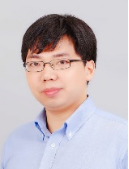
郑银强 教授
个人简介:Dr.Yinqiang Zheng received his Doctoral degree of engineering from the Department of Mechanical and Control Engineering, Tokyo Institute of Technology, Tokyo, Japan, in 2013. After working at National Institute of Informatics, Japan, for more than seven years, he is currently an associate professor in the Next Generation Artificial Intelligence Research Center, The University of Tokyo, Japan, leading the Optical Sensing and Camera System Laboratory (OSCARS Lab.). He has served as program committee member for major international conferences, like CVPR, ICCV, ECCV, ICLR, NeurIPS, AAAI, IJCAI, MICCAI, area chair for MVA2017, DICTA2018, ISAIR2019, ACCV2020, 3DV2020, ICCV2021, MM2022, workshop chair for ACCV2022, and workshop co-organizer for ICPR2018 and ICCV2019. His research interests include image processing, optical imaging and mathematical optimization.
报告题目: Making Rolling Shutter Distortion Correction Easier
报告摘要:Consumer digital cameras are usually equipped with a rolling shutter, which has a variety of merits in cost, speed and noise level. However, it indeed leads to annoying geometric distortion when the camera and the scene undergo fast relative motions. Various algorithms have been proposed to correct rolling shutter distortion, yet the computation is complex and the learned model does not generalize well. This talk will cover two novel strategies that try to make the task of rolling shutter distortion correction easier, including (1) to use the global reset feature and convert the distortion correction task into a deblurring task; (2) to use dual rolling shutter for simultaneous rolling shutter correction and frame interpolation.
四、会议流程
13:55-14:00 会议签到
14:00-14:15 学院领导致辞、重点实验室介绍
14:15-14:20 在线合影
14:20-15:00 主题报告:陈渤教授
15:00-15:40 主题报告:施柏鑫研究员
15:40-16:20 主题报告:林嘉文教授
16:20-17:00 主题报告:周易教授
17:00-17:40 主题报告:郑银强教授
17:40-18:00 讨论与总结
五、联系方式
承办方联系人:戴老师 18710752665 daiyuchao@nwpu.edu.cn
主办方联系人:徐老师 010-82544661 info@csig.org.cn
